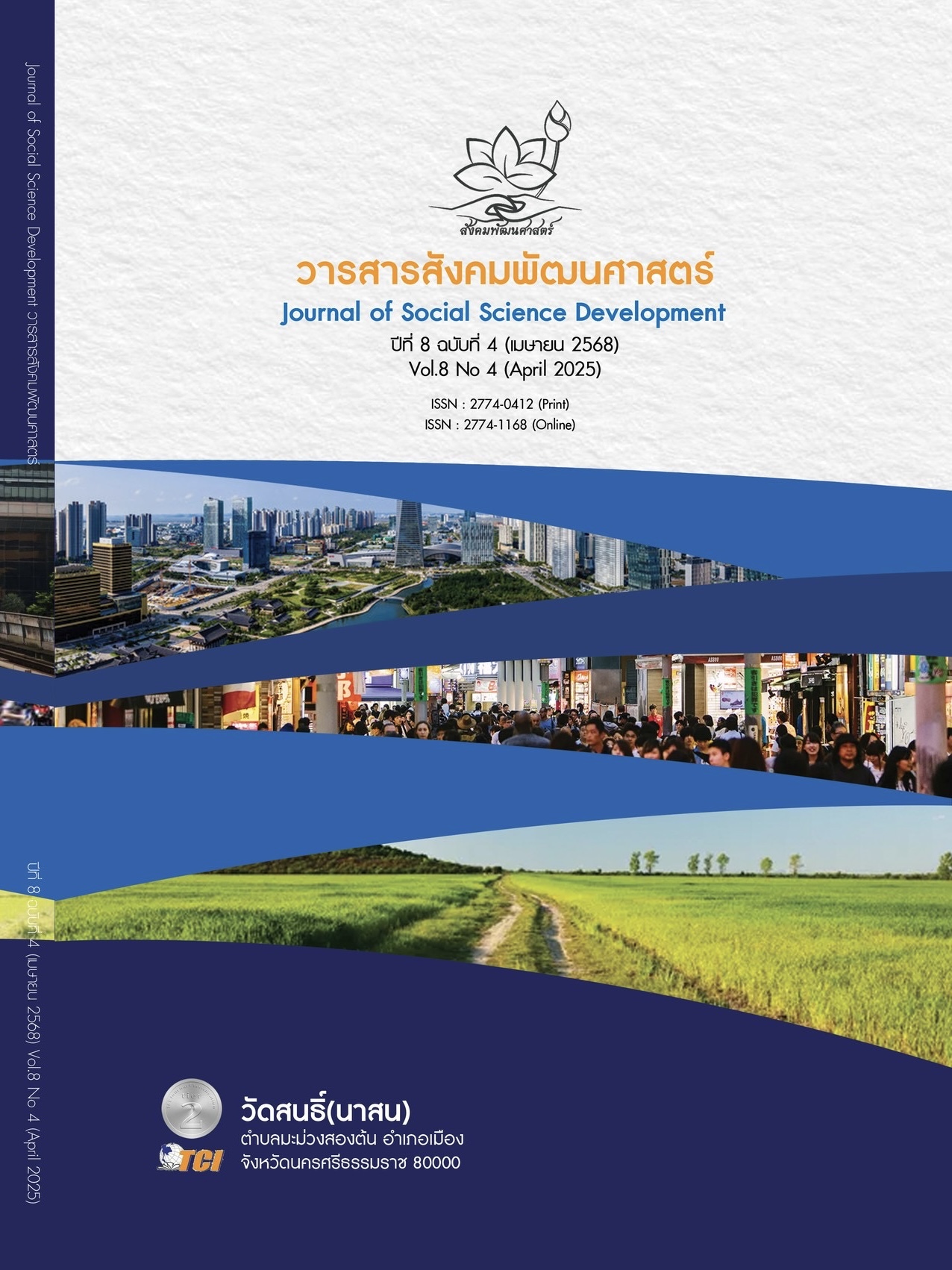มาตรการทางกฎหมายในการเลือกตั้งสมาชิกสภาผู้แทนราษฎรตามระบบสัดส่วนของ ประเทศไทยเปรียบเทียบกับต่างประเทศที่มีรูปแบบการปกครองตามระบบรัฐสภา
Main Article Content
บทคัดย่อ
การวิจัยครั้งนี้มีวัตถุประสงค์ 1) เพื่อศึกษาสภาพปัญหา แนวคิด ทฤษฎี เกี่ยวกับมาตรการทางกฎหมายในการเลือกตั้งสมาชิกสภาผู้แทนราษฎรตามระบบสัดส่วนของประเทศไทย 2) เพื่อศึกษาเปรียบเทียบมาตรการทางกฎหมายในการเลือกตั้งสมาชิกสภาผู้แทนราษฎรตามระบบสัดส่วนของประเทศไทยเปรียบเทียบกับต่างประเทศที่มีรูปแบบการปกครองตามระบบรัฐสภา 3) เพื่อเสนอแนะให้แก้ไขเพิ่มเติมกฎหมาย การวิจัยครั้งนี้เป็นการวิจัยเชิงคุณภาพโดยการวิเคราะห์จากเอกสารทางกฎหมายทั้งของต่างประเทศและของประเทศไทย และมีการสัมภาษณ์เชิงลึกจากผู้เชี่ยวชาญด้านกฎหมาย ผลการวิจัยพบว่า ตั้งแต่มีการประกาศใช้รัฐธรรมนูญแห่งราชอาณาจักรไทย พุทธศักราช 2560 และพระราชบัญญัติประกอบรัฐธรรมนูญว่าด้วยการเลือกตั้งสมาชิกสภาผู้แทนราษฎร พ.ศ. 2561 ปรากฎว่า 1) ปัญหา แนวคิด ทฤษฎี ปัญหา แนวคิด ทฤษฎี เกี่ยวกับมาตรการทางกฎหมายในการเลือกตั้งสมาชิกสภาผู้แทนราษฎรตามระบบสัดส่วนของประเทศไทย พบว่า ระบบสัดส่วนของไทยยังขาดความชัดเจน โดยเฉพาะวิธีคำนวณ ส.ส. บัญชีรายชื่อที่เปลี่ยนบ่อย บัตรเลือกตั้งใบเดียวลดการแสดงเจตจำนง พรรคเล็กเสียเปรียบ ขาดความเป็นธรรมและเสมอภาคทางการเมือง ขัดต่อแนวคิดประชาธิปไตยแบบผู้แทน และไม่สอดคล้องกับหลักการแบ่งแยกอำนาจ 2) มาตรการทางกฎหมายในการเลือกตั้งสมาชิกสภาผู้แทนราษฎรตามระบบสัดส่วนของประเทศไทยเปรียบเทียบกับต่างประเทศ พบว่า ประเทศรัฐสภาอื่น เช่น นอร์เวย์ สวีเดน ฟินแลนด์ เยอรมนี และนิวซีแลนด์ มีระบบสัดส่วนที่ชัดเจน เช่น บัตรเลือกตั้ง 2 ใบ เกณฑ์ขั้นต่ำ วิธีคำนวณที่แม่นยำ และระบบเกลี่ยส่วนอย่างเป็นธรรม ต่างจากไทยที่ขาดกลไกเหล่านี้ และ 3) ข้อเสนอแนะปรับปรุงระบบเลือกตั้งให้โปร่งใส เป็นธรรม และเหมาะสมกับบริบทไทย โดยศึกษาต่างประเทศ กำหนดเกณฑ์ขั้นต่ำ ทบทวนบทบาทวุฒิสภา ปรับบัตรเลือกตั้ง ใช้เทคโนโลยีรายงานผลแบบเรียลไทม์ ปฏิรูปรัฐธรรมนูญ และส่งเสริมความรู้ทางการเมือง
Article Details

อนุญาตภายใต้เงื่อนไข Creative Commons Attribution-NonCommercial-NoDerivatives 4.0 International License.
เอกสารอ้างอิง
ชงคชาญ สุวรรณมณี. (2561). การเลือกตั้งครั้งแรกตามรัฐธรรมนูญแห่งราชอาณาจักรไทย พุทธศักราช 2560. เรียกใช้เมื่อ 20 มกราคม 2568 จาก https://www.parliament.go.th/ewtadmin/ewt/parliament_parcy/
ปริญญา เทวานฤมิตรกุล. (2567). ปัญหาของระบบเลือกตั้ง “บัตรใบเดียว” ตามรัฐธรรมนูญ พ.ศ. 2560 กับปัญหาการบริหารจัดการเลือกตั้ง: ศึกษาจากการเลือกตั้ง 2562 และการแก้ไขกลับไปเป็นระบบ “บัตรสองใบ” ในการเลือกตั้ง 2566. วารสารนิติศาสตร์, 53(1), 1-25.
รัฐธรรมนูญแห่งราชอาณาจักรไทย. (2540). ราชกิจจานุเบกษา เล่ม 114 ตอนที่ 55 ก หน้า (10 ตุลาคม 2540).
__________. (2550). ราชกิจจานุเบกษา เล่ม 124 ตอนที่ 47 ก หน้า 1 (24 สิงหาคม 2550).
__________. (2560). ราชกิจจานุเบกษา เล่ม 134 ตอนที่ 40 ก หน้า 1 (6 เมษายน 2560).
สถาบันพระปกเกล้า. (2559). บทบาทหน้าที่ของ กกต. กรุงเทพมหานคร: สถาบันพระปกเกล้า.
สมคิด เลิศไพฑูรย์. (2548). กฎหมายรัฐธรรมนูญ หลักการใหม่ตามรัฐธรรมนูญแห่งราชอาณาจักรไทย พุทธศักราช 2540. (พิมพ์ครั้งที่ 1). กรุงเทพมหานคร: สำนักพิมพ์มหาวิทยาลัยธรรมศาสตร์.
สมบัติ ธํารงธัญวงศ์. (2558). การเมือง: แนวคิดและการพัฒนา. (พิมพ์ครั้งที่ 22). กรุงเทพมหานคร: เสมาธรรม.
สำนักงานเลขาธิการรัฐสภา. (2561). การมีส่วนร่วมทางการเมืองในระบอบประชาธิปไตยไทย. กรุงเทพมหานคร: สํานักพิมพ์สำนักงานเลขาธิการรัฐสภา.


